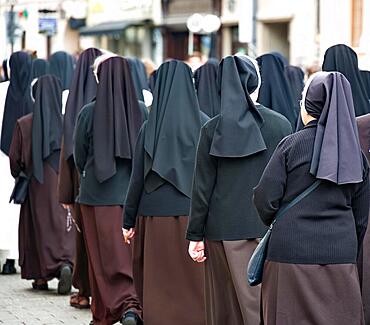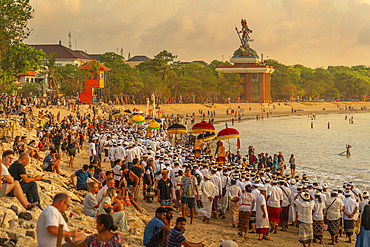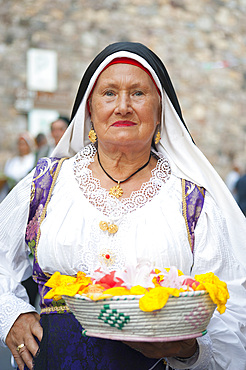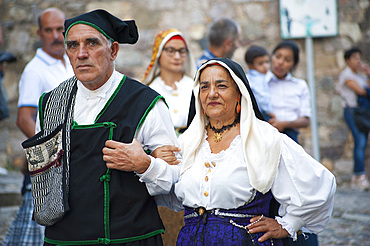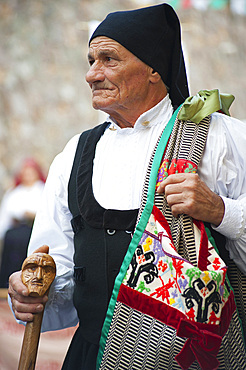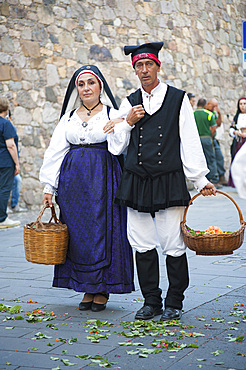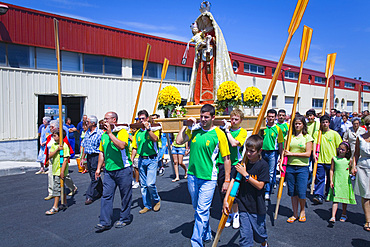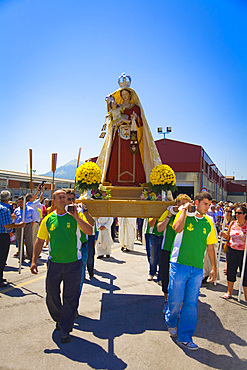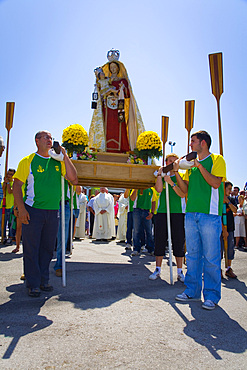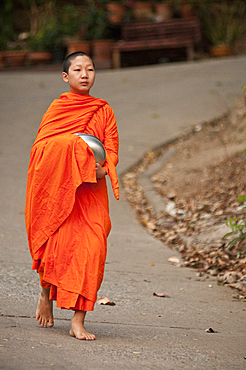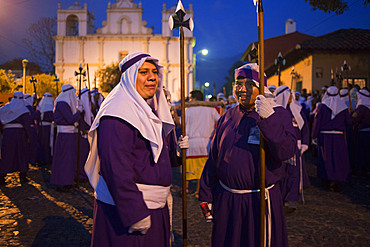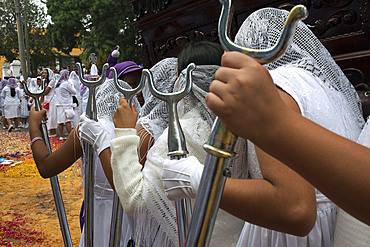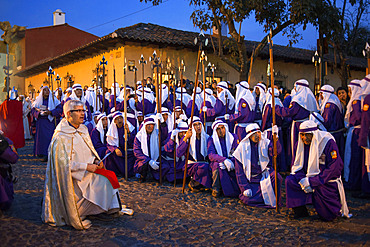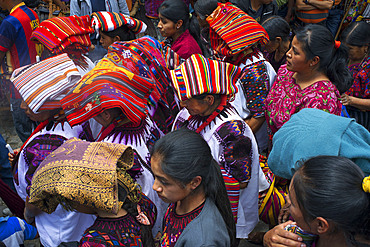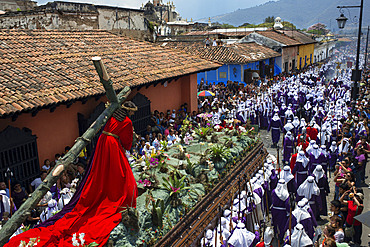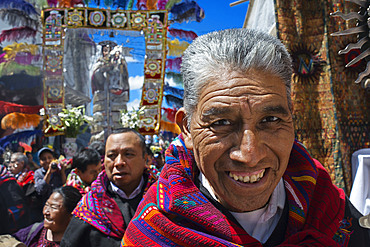Recent searches
Loading...
1384-341 - Village fiesta procession of villagers with statue of Virgin Mary, Rubillon, Ourense province, Galicia, Spain
1384-108 - Procession of people carrying palm leaves on Palm Sunday, Easter 2023, Merida, Yucatan State, Mexico
809-9030 - Entrance procession of monks, Buddhist ceremony, Phuoc Hue Buddhist Pagoda, Vietnam, Indochina, Southeast Asia, Asia
832-404183 - A closeup shot of two young Caucasian hugging females with LGBT pride flag outdoors
832-404182 - A closeup shot of two young Caucasian females holding LGBT pride flag outdoors
832-404181 - A closeup shot of two young Caucasian females holding LGBT pride flag outdoors
832-404180 - A closeup shot of two young Caucasian females holding hands with LGBT pride bracelets outdoors
832-402830 - Symbolic image, homosexuality, tolerance, CSD, Pride Week, rainbow flag against blue sky, Germany, Europe
832-402822 - Nuns at the Corpus Christi procession 2023 in Krakow, Poland, Europe
832-400567 - The procession of princes in Dresden, at sunset and long exposure, Dresden, Saxony, Germany, Europe
844-29138 - View of colourful offerings procession on Kuta Beach for Nyepi, Balinese New Year Celebrations, Kuta, Bali, Indonesia, South East Asia, Asia
1366-1117 - Europe, Portugal, Obidos. April 15, 2015. Good Friday procession in Obidos.
450-4637 - Waiting to lead the procession of the Bishop of Santa Clara at his Sunday service, Santa Clara, Cuba
832-397372 - People walk through the streets of the city in incense mist during the Corpus Christi procession, Cologne, North Rhine-Westphalia, Germany, Europe
832-397374 - Incense waving altar boys during the Corpus Christi procession, Cologne, North Rhine-Westphalia, Germany, Europe
832-397376 - Incense waving altar boys during the Corpus Christi procession, Cologne, North Rhine-Westphalia, Germany, Europe
832-397375 - Incense waving altar boys during the Corpus Christi procession, Cologne, North Rhine-Westphalia, Germany, Europe
832-397373 - Girl with wreaths in her hair at the Corpus Christi procession, Cologne, North Rhine-Westphalia, Germany, Europe
746-91997 - Cagliari, Villagrande Strisaili Traditional Dress; Sant'Efisio traditional event, the most important religious feast in Sardinia, Italy, Europe
746-92045 - Cagliari, Ramadura, Sant'Efisio traditional event, the most important religious feast in Sardinia, Italy, Europe
746-92046 - Cagliari, Ramadura, Sant'Efisio traditional event, the most important religious feast in Sardinia, Italy, Europe
746-91993 - Cagliari, Launeddas, Sant'Efisio traditional event, the most important religious feast in Sardinia, Italy, Europe
746-92149 - Typical dress of Pabillonis with Launeddas, Procession of Santa Maria de is Aquas, Sardara, Sardinia, Italy, Europe
746-92143 - Typical dress of Terralba, Procession of Santa Maria de is Aquas, Sardara, Sardinia, Italy, Europe
746-92148 - Typical dress of Sardara, Procession of Santa Maria de is Aquas, Sardara, Sardinia, Italy, Europe
746-92144 - Typical dress of Terralba, Procession of Santa Maria de is Aquas, Sardara, Sardinia, Italy, Europe
746-92047 - Cagliari, Ramadura, Sant'Efisio traditional event, the most important religious feast in Sardinia, Italy, Europe
746-92147 - Typical dress of Sardara, Procession of Santa Maria de is Aquas, Sardara, Sardinia, Italy, Europe
746-92039 - Cagliari, Ramadura, Sant'Efisio traditional event, the most important religious feast in Sardinia, Italy, Europe
746-92043 - Cagliari, Ramadura, Sant'Efisio traditional event, the most important religious feast in Sardinia, Italy, Europe
746-92150 - Typical dress of Pabillonis, Procession of Santa Maria de is Aquas, Sardara, Sardinia, Italy, Europe
746-92146 - Typical dress of Sardara, Procession of Santa Maria de is Aquas, Sardara, Sardinia, Italy, Europe
746-92031 - Cagliari, Sant'Efisio traditional event, the most important religious feast in Sardinia, Italy, Europe
746-92036 - Cagliari, Sant'Efisio traditional event, the most important religious feast in Sardinia, Italy, Europe
746-92145 - Typical dress of Terralba, Procession of Santa Maria de is Aquas, Sardara, Sardinia, Italy, Europe
746-92041 - Cagliari, Ramadura, Sant'Efisio traditional event, the most important religious feast in Sardinia, Italy, Europe
746-92142 - Chariot, Procession of Santa Maria de is Aquas, Sardara, Sardinia, Italy, Europe
746-92034 - Cagliari, Sant'Efisio traditional event, the most important religious feast in Sardinia, Italy, Europe
746-92037 - Cagliari, Sant'Efisio traditional event, the most important religious feast in Sardinia, Italy, Europe
746-92040 - Cagliari, Ramadura, Sant'Efisio traditional event, the most important religious feast in Sardinia, Italy, Europe
746-92035 - Cagliari, Sant'Efisio traditional event, the most important religious feast in Sardinia, Italy, Europe
746-92044 - Cagliari, Via Roma, Ramadura, Sant'Efisio traditional event, the most important religious feast in Sardinia, Italy, Europe
746-92042 - Cagliari, Ramadura, Sant'Efisio traditional event, the most important religious feast in Sardinia, Italy, Europe
746-92032 - Cagliari, Ittiri Dress e Jewel, Sant'Efisio traditional event, the most important religious feast in Sardinia, Italy, Europe
746-92033 - Cagliari, Typical Dress of Selegas; Sant'Efisio traditional event, the most important religious feast in Sardinia, Italy, Europe
746-92229 - Holy Thursday procession in Radicofani, Tuscany, Italy, Europe
746-92228 - Holy Thursday procession in Radicofani, Tuscany, Italy, Europe
746-92038 - Cagliari, Ramadura, Sant'Efisio traditional event, the most important religious feast in Sardinia, Italy, Europe
1350-5500 - procession in Virgen del Carmen day or Carmen virgin (16-July).
Colindres, Cantabria, Spain.
1350-5502 - procession in Virgen del Carmen day or Carmen virgin (16-July).
Colindres, Cantabria, Spain.
1350-5503 - procession in Virgen del Carmen day or Carmen virgin (16-July).
Colindres, Cantabria, Spain.
1350-5499 - procession in Virgen del Carmen day or Carmen virgin (16-July).
Colindres, Cantabria, Spain.
1350-5501 - procession in Virgen del Carmen day or Carmen virgin (16-July).
Colindres, Cantabria, Spain.
1178-40246 - Indigenous dancers wearing traditional clothing
746-90548 - Mooment of the Good Friday Procession in Savona is a religious event, which dates back to 1200 AD in the Middle Ages. Savona; Liguria; Italy.
1350-5170 - For almost 60 years, about two thousand people from 28 different guilds (associations of faithful Catholics) come together on Good Friday to participate in this procession, carrying emblems, religious images concerning the Stations of the Cross, and dressed in the distinctive colors of their guilds, Each one of the ,??Guilds,?? carries an image with a picture of Jesus Christ,??s Stations of the Cross and of the mysteries of the Holy Rosary,
746-90550 - Mooment of the Good Friday Procession in Savona is a religious event, which dates back to 1200 AD in the Middle Ages. Savona; Liguria; Italy.
1350-5256 - For almost 60 years, about two thousand people from 28 different guilds (associations of faithful Catholics) come together on Good Friday to participate in this procession, carrying emblems, religious images concerning the Stations of the Cross, and dressed in the distinctive colors of their guilds, Each one of the ,??Guilds,?? carries an image with a picture of Jesus Christ,??s Stations of the Cross and of the mysteries of the Holy Rosary,
746-90547 - The kiss of Judas by Giuseppe Rungaldier (1926) Brotherhood of Saints Augustine and Monica. Exit from the cathedral.The Good Friday Procession in Savona is a religious event, which dates back to 1200 AD in the Middle Ages. Savona; Liguria; Italy.
746-90543 - During the procession of the Madonna della Neve on 5 August the statue of the Madonna is taken by rowing boat to the Natarella beach. Savona; Liguria; Italy
746-90546 - Christ falls under the cross (17th century Neapolitan school) Confraternity of Saints Peter and CatherineThe Good Friday Procession in Savona is a religious event, which dates back to 1200 AD in the Middle Ages. Savona; Liguria; Italy.
1350-5134 - For almost 60 years, about two thousand people from 28 different guilds (associations of faithful Catholics) come together on Good Friday to participate in this procession, carrying emblems, religious images concerning the Stations of the Cross, and dressed in the distinctive colors of their guilds, Each one of the ,??Guilds,?? carries an image with a picture of Jesus Christ,??s Stations of the Cross and of the mysteries of the Holy Rosary,
746-90549 - Mooment of the Good Friday Procession in Savona is a religious event, which dates back to 1200 AD in the Middle Ages. Savona; Liguria; Italy.
746-90545 - Christ falls under the cross (17th century Neapolitan school) Confraternity of Saints Peter and CatherineThe Good Friday Procession in Savona is a religious event, which dates back to 1200 AD in the Middle Ages. Savona; Liguria; Italy.
1350-5144 - There are twenty three main platform, with the end of the procession marked by that dedicated to Our Lady of Solitude also called ,??La Dolorosa,?? because of the expression her face takes on upon seeing her dead Son, The statue is carried by around 40 men, carrying upon their shoulders a weight of over a ton,
746-90551 - Mooment of the Good Friday Procession in Savona is a religious event, which dates back to 1200 AD in the Middle Ages. Savona; Liguria; Italy.
1350-5146 - For almost 60 years, about two thousand people from 28 different guilds (associations of faithful Catholics) come together on Good Friday to participate in this procession, carrying emblems, religious images concerning the Stations of the Cross, and dressed in the distinctive colors of their guilds, Each one of the ,??Guilds,?? carries an image with a picture of Jesus Christ,??s Stations of the Cross and of the mysteries of the Holy Rosary,
746-90544 - During the procession of the Madonna della Neve on 5 August the statue of the Madonna is taken by rowing boat to the Natarella beach. Savona; Liguria; Italy
1350-5264 - There are twenty three main platform, with the end of the procession marked by that dedicated to Our Lady of Solitude also called ,??La Dolorosa,?? because of the expression her face takes on upon seeing her dead Son, The statue is carried by around 40 men, carrying upon their shoulders a weight of over a ton,
1178-38424 - Person wearing high heel boots carrying purse in pride parade
1350-3237 - Young Buddhist monk on morning procession for offerings of food; Huay Kaew area, Chiang Mai, Thailand.
1350-3242 - Procession and ceremony for young boys about to become novice monks by the Shan people of Burma at Wat Khun Thwong Buddhist temple in Chiang Mai, Thailand.
1350-3758 - Easter Holy Week procession in Antigua, Guatemala. Jesus Nazareno de la Penitencia Procession in Antigua, Guatemala. Holy Week, friday.
1350-3235 - Young Buddhist monks on their morning procession for offerings of food near a monastery in the Huay Kaew area of Chiang Mai, Thailand.
1350-3240 - Buddhist monk with bowl during morning procession for offerings of food; Huay Kaew area, Chiang Mai, Thailand.
1350-2688 - Verges, a small town in the Northeast of Catalonia (Spain), during Easter celebrates the Procession of Verges with skeletons dancing on the sound of a drum, Roman soldiers, known as the 'Manages', and a representation of the life and crucifixion of Jesus Christ. The Procession features the Dance of Death, a tradition from the Middle Age associated with epidemics and plagues and the only one remaining in Spain Ten skeletons dance to the beat of a drum to remember that no one is exempt of death. The backdrop of the medieval walls and towers of Verges is key to this macabre staging.
1350-3754 - A boy spreads incense at the Jesus Nazareno del Perdon procession during Easter Holy Week in Antigua Guatemala. Holy Week (Semana Santa) carpet of colored sawdust (alfombras) being prepared on Antigua street. Jesus Nazareno de la Penitencia Procession in Antigua, Guatemala.
1350-2693 - Verges, a small town in the Northeast of Catalonia (Spain), during Easter celebrates the Procession of Verges with skeletons dancing on the sound of a drum, Roman soldiers, known as the 'Manages', and a representation of the life and crucifixion of Jesus Christ. The Procession features the Dance of Death, a tradition from the Middle Age associated with epidemics and plagues and the only one remaining in Spain Ten skeletons dance to the beat of a drum to remember that no one is exempt of death. The backdrop of the medieval walls and towers of Verges is key to this macabre staging.
1350-2692 - Verges, a small town in the Northeast of Catalonia (Spain), during Easter celebrates the Procession of Verges with skeletons dancing on the sound of a drum, Roman soldiers, known as the 'Manages', and a representation of the life and crucifixion of Jesus Christ. The Procession features the Dance of Death, a tradition from the Middle Age associated with epidemics and plagues and the only one remaining in Spain Ten skeletons dance to the beat of a drum to remember that no one is exempt of death. The backdrop of the medieval walls and towers of Verges is key to this macabre staging.
1350-2695 - Verges, a small town in the Northeast of Catalonia (Spain), during Easter celebrates the Procession of Verges with skeletons dancing on the sound of a drum, Roman soldiers, known as the 'Manages', and a representation of the life and crucifixion of Jesus Christ. The Procession features the Dance of Death, a tradition from the Middle Age associated with epidemics and plagues and the only one remaining in Spain Ten skeletons dance to the beat of a drum to remember that no one is exempt of death. The backdrop of the medieval walls and towers of Verges is key to this macabre staging.
1350-3826 - Tsepak Lhakhang Monastery. Lhasa Tibet China. Outside of Ramoche Temple. The women make a procession around the temple to ask the god of longevity Cherisi chepal to have a good delivery, or old people to pray to him.
1350-3751 - Holy Week processions in Guatemala city. Holy Thursday. Holy Week in Guatemala is celebrated with street expressions of faith, called processions, usually organized by a "hermandades". Each procession of Holy Week has processional floats and steps, which are often religious images of the Passion of Christ, or Marian images, although there are exceptions, like the allegorical steps of saints.
1350-3777 - Chichicastenango, Quiche, Guatemala, Central America. Processions of Festival of Santo Thomas. On Easter Sunday The Comrades (Council Men) Carry The Andas (Floats) Of The Saints In Procession From The Santo Tomas
1350-3246 - Young boy of the Shan people from Burma about to become a novice monk during a ceremony at Wat Khun Thwong Buddhist temple in Chiang Mai, Thailand.
1350-3244 - Procession and ceremony for young boys about to become novice monks by the Shan people of Burma at Wat Khun Thwong Buddhist temple in Chiang Mai, Thailand.
1350-3760 - Easter Holy Week procession in Antigua, Guatemala. Jesus Nazareno de la Penitencia Procession in Antigua, Guatemala. Holy Week, friday.
1350-2690 - Verges, a small town in the Northeast of Catalonia (Spain), during Easter celebrates the Procession of Verges with skeletons dancing on the sound of a drum, Roman soldiers, known as the 'Manages', and a representation of the life and crucifixion of Jesus Christ. The Procession features the Dance of Death, a tradition from the Middle Age associated with epidemics and plagues and the only one remaining in Spain Ten skeletons dance to the beat of a drum to remember that no one is exempt of death. The backdrop of the medieval walls and towers of Verges is key to this macabre staging.
1350-3778 - Chichicastenango, Quiche, Guatemala, Central America. Typical women hats during Holy Week processions.
1350-3753 - Holy Week processions in Guatemala city. Holy Thursday. Comparsa. Holy Week in Guatemala is celebrated with street expressions of faith, called processions, usually organized by a "hermandades". Each procession of Holy Week has processional floats and steps, which are often religious images of the Passion of Christ, or Marian images, although there are exceptions, like the allegorical steps of saints.
1350-2691 - Verges, a small town in the Northeast of Catalonia (Spain), during Easter celebrates the Procession of Verges with skeletons dancing on the sound of a drum, Roman soldiers, known as the 'Manages', and a representation of the life and crucifixion of Jesus Christ. The Procession features the Dance of Death, a tradition from the Middle Age associated with epidemics and plagues and the only one remaining in Spain Ten skeletons dance to the beat of a drum to remember that no one is exempt of death. The backdrop of the medieval walls and towers of Verges is key to this macabre staging.
1350-2687 - Verges, a small town in the Northeast of Catalonia (Spain), during Easter celebrates the Procession of Verges with skeletons dancing on the sound of a drum, Roman soldiers, known as the 'Manages', and a representation of the life and crucifixion of Jesus Christ. The Procession features the Dance of Death, a tradition from the Middle Age associated with epidemics and plagues and the only one remaining in Spain Ten skeletons dance to the beat of a drum to remember that no one is exempt of death. The backdrop of the medieval walls and towers of Verges is key to this macabre staging.
1350-3763 - Easter Holy Week procession in Antigua, Guatemala. Jesus Nazareno de la Penitencia Procession in Antigua, Guatemala. Holy Week, friday.
1350-2689 - Verges, a small town in the Northeast of Catalonia (Spain), during Easter celebrates the Procession of Verges with skeletons dancing on the sound of a drum, Roman soldiers, known as the 'Manages', and a representation of the life and crucifixion of Jesus Christ. The Procession features the Dance of Death, a tradition from the Middle Age associated with epidemics and plagues and the only one remaining in Spain Ten skeletons dance to the beat of a drum to remember that no one is exempt of death. The backdrop of the medieval walls and towers of Verges is key to this macabre staging.
1350-2696 - Verges, a small town in the Northeast of Catalonia (Spain), during Easter celebrates the Procession of Verges with skeletons dancing on the sound of a drum, Roman soldiers, known as the 'Manages', and a representation of the life and crucifixion of Jesus Christ. The Procession features the Dance of Death, a tradition from the Middle Age associated with epidemics and plagues and the only one remaining in Spain Ten skeletons dance to the beat of a drum to remember that no one is exempt of death. The backdrop of the medieval walls and towers of Verges is key to this macabre staging.
1350-2697 - Verges, a small town in the Northeast of Catalonia (Spain), during Easter celebrates the Procession of Verges with skeletons dancing on the sound of a drum, Roman soldiers, known as the 'Manages', and a representation of the life and crucifixion of Jesus Christ. The Procession features the Dance of Death, a tradition from the Middle Age associated with epidemics and plagues and the only one remaining in Spain Ten skeletons dance to the beat of a drum to remember that no one is exempt of death. The backdrop of the medieval walls and towers of Verges is key to this macabre staging.
1350-2694 - Verges, a small town in the Northeast of Catalonia (Spain), during Easter celebrates the Procession of Verges with skeletons dancing on the sound of a drum, Roman soldiers, known as the 'Manages', and a representation of the life and crucifixion of Jesus Christ. The Procession features the Dance of Death, a tradition from the Middle Age associated with epidemics and plagues and the only one remaining in Spain Ten skeletons dance to the beat of a drum to remember that no one is exempt of death. The backdrop of the medieval walls and towers of Verges is key to this macabre staging.
1350-3775 - Chichicastenango, Quiche, Guatemala, Central America. Processions of Festival of Santo Thomas. On Easter Sunday The Comrades (Council Men) Carry The Andas (Floats) Of The Saints In Procession From The Santo Tomas
1350-1633 - People carry a body, to burn, going to Manikarnika Ghat, the burning ghat, Varanasi, Uttar Pradesh, India.
1350-882 - Fiesta del Gran Poder, Plaza San Francisco, in background San Francisco church, La Paz, Bolivia








